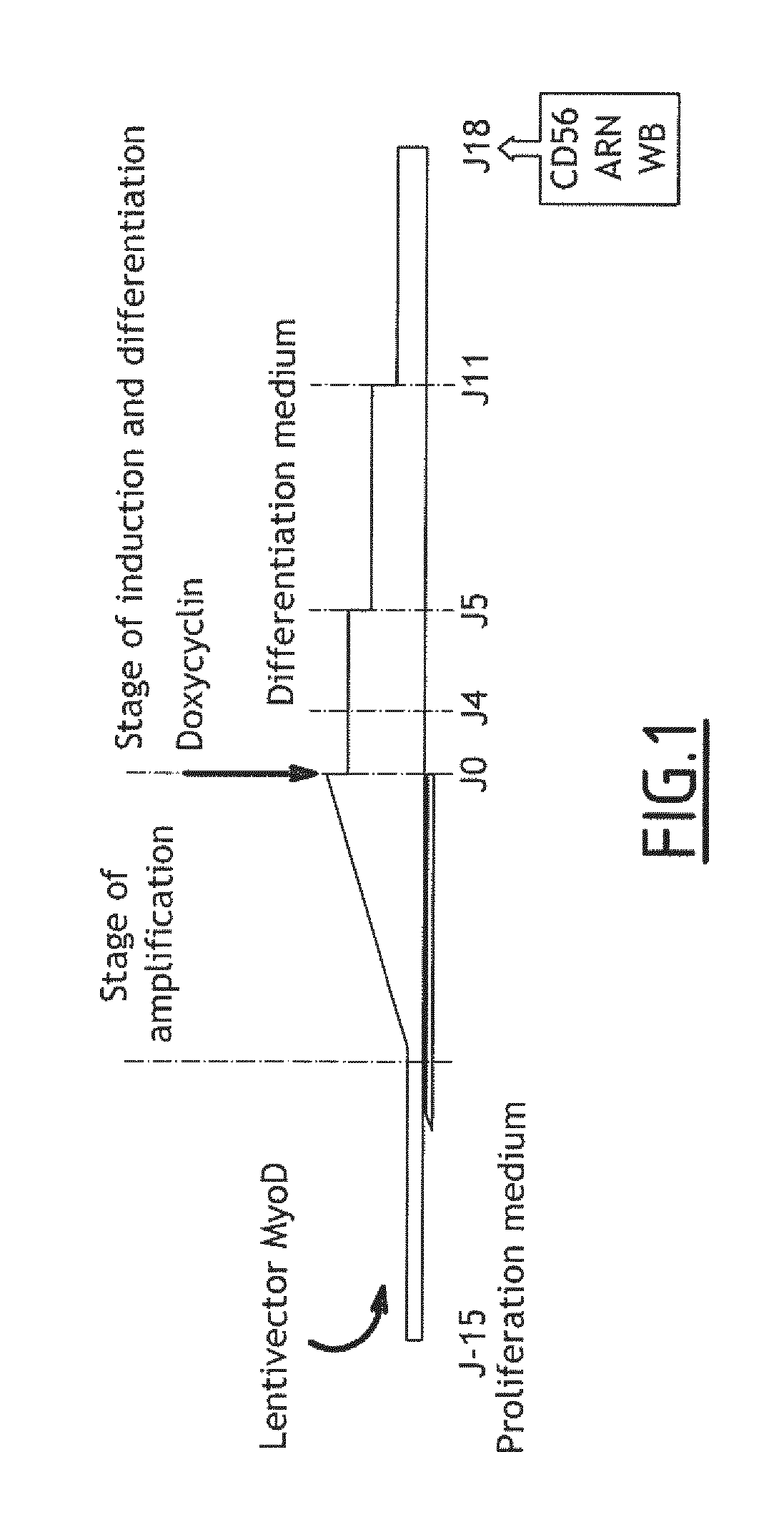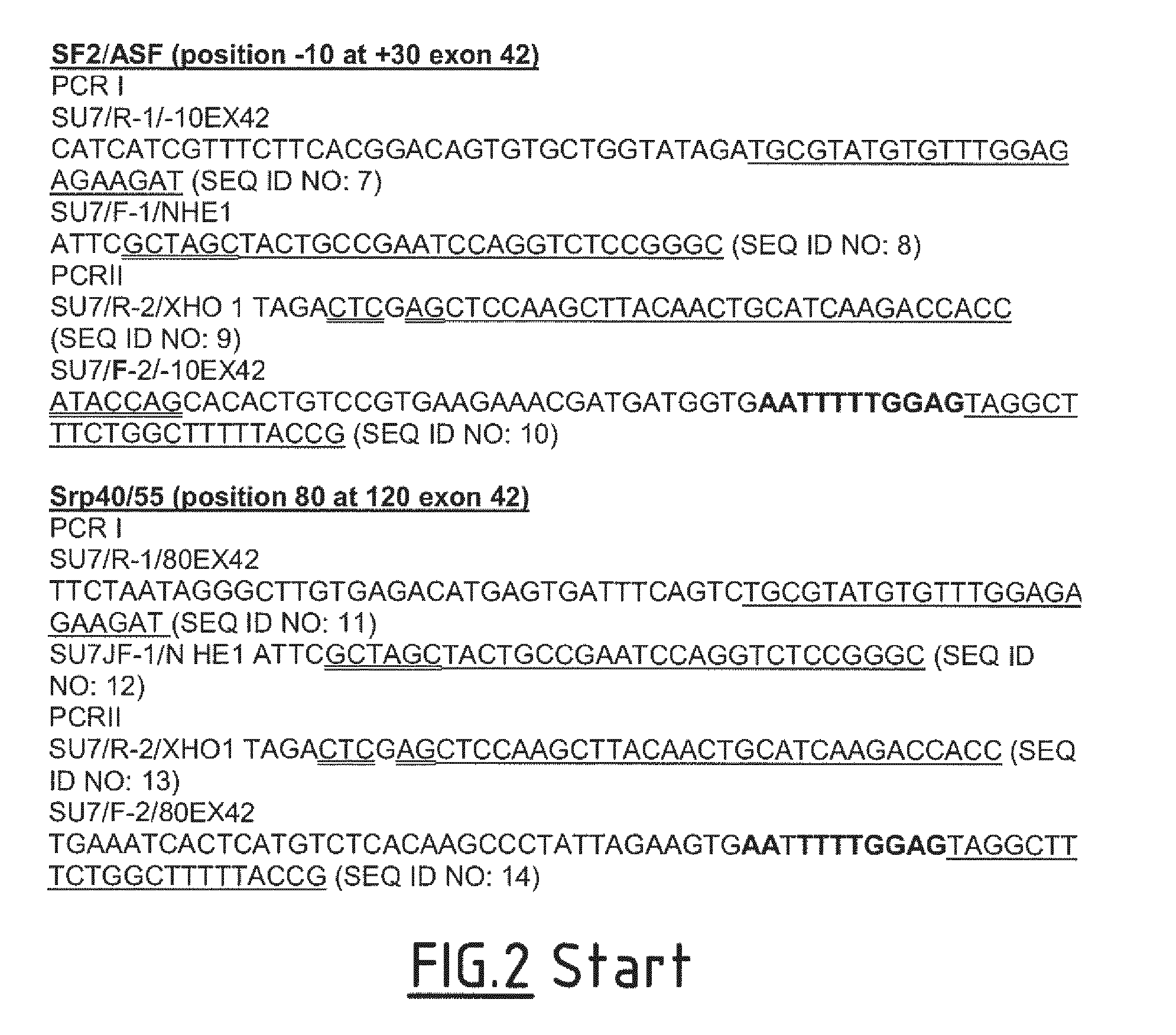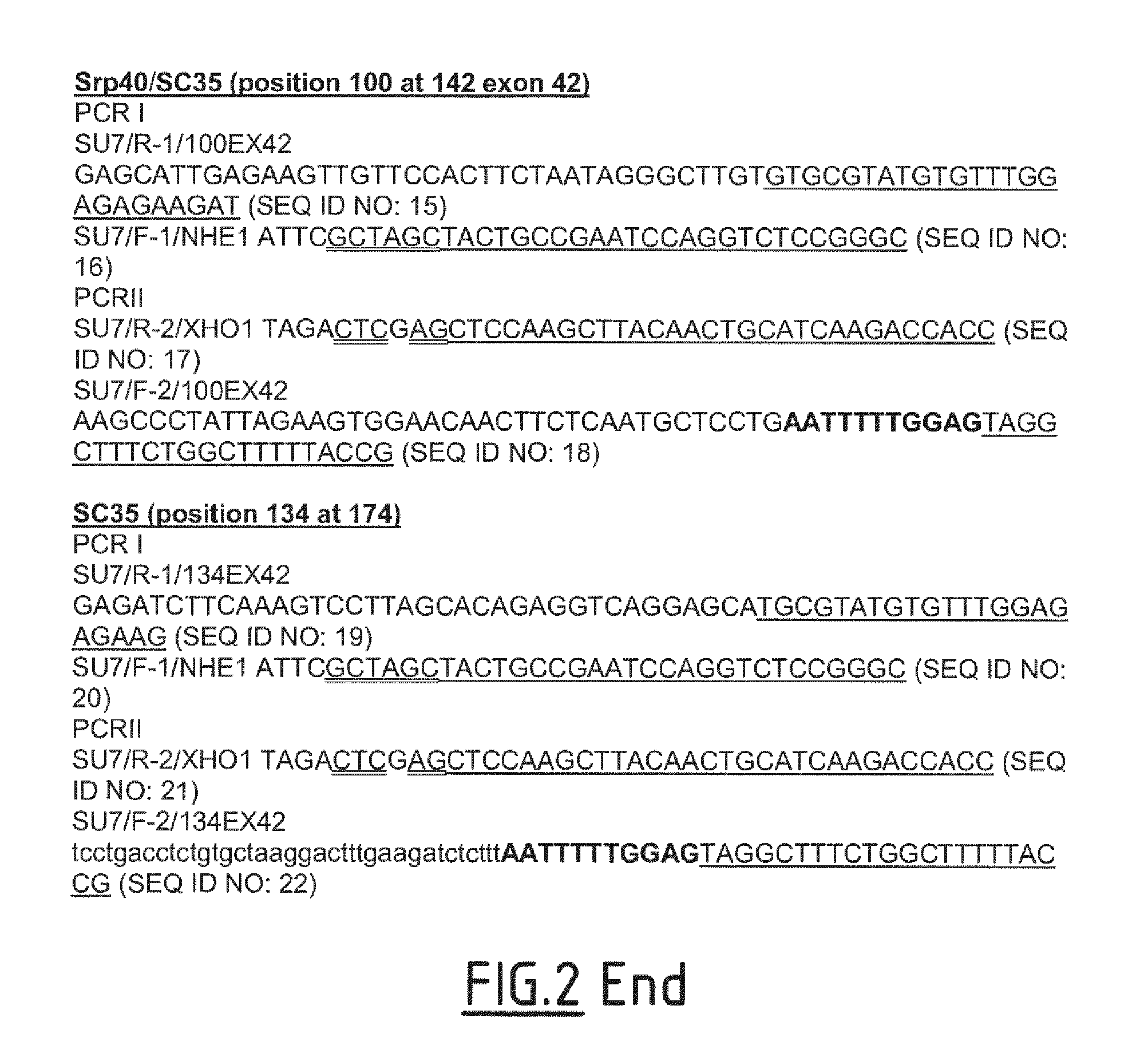Exon Skipping Therapy for Functional Amelioration of Semifunctional Dystrophin in Becker and Duchenne Muscular Dystrophy
- Summary
- Abstract
- Description
- Claims
- Application Information
AI Technical Summary
Benefits of technology
Problems solved by technology
Method used
Image
Examples
example 1
[0040]Duchenne muscular dystrophy (DMD) and Becker muscular dystrophy (BMD) both result from mutations in the dystrophin gene. However, while DMD is one of the most severe myopathies, BMD is characterized by much milder symptoms due to the production by BMD individuals of some truncated dystrophins. The functionality of these truncated dystrophins depends either on the importance of the missing domains or on their stability. As a result, BMD exhibits a wide range of phenotypes, ranging from almost asymptomatic to fairly severe. Interestingly, about half of the BMD population displays Δ45-47 or Δ45-48 exon deletions. These patients present unambiguous symptoms frequently associated with severe cardiac dysfunctions, although the majority of them are still ambulatory at 50 years of age.
[0041]The 45-47 and Δ45-48 exon deletions lack several, spectrin-like repeats upstream of the hinge 3 region. Six cryptic proteolysis sites have been described in dystrophin (Hori et al., Biochem Biophys...
example 2
[0058]Experiments similar to those described in Example 1 will also be carried out in dystrophin knock-out (KO) zebrafish and in the mdx mouse model. The results will show that the presence of the Δ42, Δ45-47 and Δ42, Δ45-Δ48 proteins can compensate for the loss of the dystrophin protein.
[0059]Fluorescence Recovery after Photobleaching (FRAP) experiments will also be carried, out to document protein turnover and relocalization of the truncated dystrophin proteins. The results will show normal or near normal protein turnover and localization of the Δ42, Δ45-47 and Δ42, Δ45-648 proteins
example 3
[0060]In vivo exon skipping of exon 42 in Δ45-47 and Δ45-Δ48 dystrophin deletion mutation: corrective gene therapy for BMD patients
[0061]AONs complementary to sequences necessary for correct splicing of exon 42 in the dystrophin gene are designed and prepared, e.g. phosphorodiamidate morpholino oligomers (PMOs), 2′-O-Met oligomers, tricyclo (tc)-DNAs, U7 short nuclear (sn) RNAs, etc.). The AONs bind to dystrophin pre-mRNA within (internal to) or near (eternal to) exon 42 of the dystrophin gene. When these AONs are administered to individuals suffering from BMD due to either a Δ45-47 deletion mutation or a Δ45-Δ48 deletion mutation in the dystrophin gene, pre-mRNA processing is perturbed and exon 42 is not incorporated into the mature mRNA The protein that is translated in the muscle cells of these individuals thus lacks sequences encoded by exon 42, and thus the protease recognition site HPSS is absent, and the resulting Δ42, Δ45-47 and Δ42, Δ45-Δ48 proteins are produced instead. Th...
PUM
| Property | Measurement | Unit |
|---|---|---|
| Nucleic acid sequence | aaaaa | aaaaa |
Abstract
Description
Claims
Application Information
 Login to View More
Login to View More - R&D
- Intellectual Property
- Life Sciences
- Materials
- Tech Scout
- Unparalleled Data Quality
- Higher Quality Content
- 60% Fewer Hallucinations
Browse by: Latest US Patents, China's latest patents, Technical Efficacy Thesaurus, Application Domain, Technology Topic, Popular Technical Reports.
© 2025 PatSnap. All rights reserved.Legal|Privacy policy|Modern Slavery Act Transparency Statement|Sitemap|About US| Contact US: help@patsnap.com



